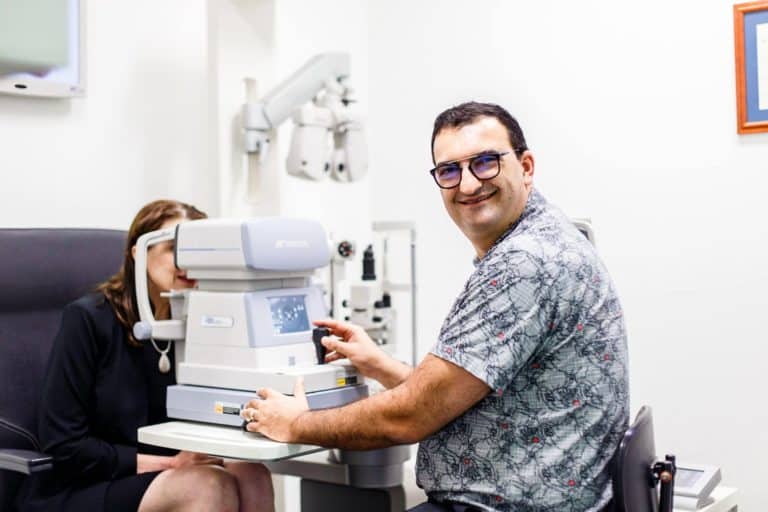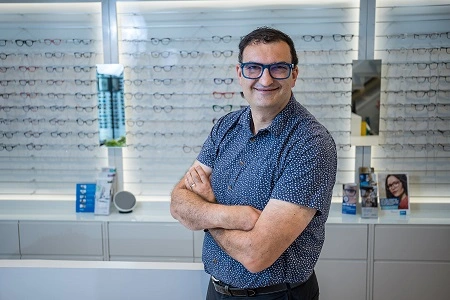Glaucoma is recognized as one of the leading causes of blindness worldwide. Disturbingly, a significant portion of the population is unaware of their condition until they experience severe vision impairment. This troubling fact stems from glaucoma’s reputation as a silent thief of sight, stealthily damaging the optic nerve without displaying any noticeable symptoms in its early stages. During World Glaucoma Week (March 9–15), our mission is to raise awareness about the crucial significance of regular eye exams. These evaluations are essential for the early detection of glaucoma, which can ultimately protect your invaluable vision.

Discover the Hidden Risks of Glaucoma: Essential Insights and Facts
Glaucoma is an eye condition that causes the gradual deterioration of the optic nerve, which plays a critical role in transmitting visual information to the brain. This disorder is often linked to increased intraocular pressure, referred to as intraocular pressure, yet it can also occur in individuals with normal eye pressure levels. If left untreated, glaucoma can lead to irreversible vision loss and ultimately result in blindness. It’s important to understand that glaucoma encompasses various disorders that affect the optic nerve in different ways. Familiarizing yourself with the different types of glaucoma is vital for effective management and treatment of this serious condition.
The two most common forms of glaucoma include:
- Open-angle glaucoma – This is the most prevalent type, characterized by a gradual blockage of the eye’s drainage canals, resulting in increased pressure within the eye.
- Angle-closure glaucoma – Although less common, this severe form occurs when the drainage angle in the eye suddenly becomes obstructed, leading to a rapid increase in pressure that can cause immediate vision loss and requires urgent medical intervention.
Moreover, there are other, less common types of glaucoma, such as congenital glaucoma, which is present at birth, and secondary glaucoma, which can develop due to other eye disorders, injuries, or certain medications.
Recognize the Importance of Early Glaucoma Detection to Protect Your Vision
Glaucoma is known for its progressive nature, meaning the damage it causes to vision worsens over time. The disease often has a gradual and painless onset, which can leave individuals unaware of their condition until their peripheral (side) vision has been severely affected. Once vision loss occurs, it is irreversible, underscoring the importance of early detection through proactive measures.
In the initial stages, glaucoma typically does not show any obvious symptoms, making regular eye examinations absolutely crucial. As the condition progresses, individuals may experience various vision-related challenges, including:
- Appearance of blind spots in peripheral vision
- Development of tunnel vision in the later stages
- Difficulty adapting to low-light environments
- Blurred vision or halos around light sources
The insidious nature of vision deterioration caused by glaucoma presents a significant challenge. Often, individuals are unaware of their declining vision until substantial damage has occurred. Regular eye examinations empower optometrists to identify early warning signs of glaucoma, enabling them to implement strategies to slow down or entirely halt the progression of vision loss.

Evaluate Your Glaucoma Risk Factors: Are You More Susceptible?
While anyone can develop glaucoma, certain risk factors may significantly increase your chances of experiencing this condition. The primary risk factors include:
- Family History – Glaucoma shows a strong genetic component; if a close family member has been diagnosed, your risk may be substantially elevated.
- Age – The likelihood of developing glaucoma increases with age, particularly after turning 40.
- High Eye Pressure – Elevated intraocular pressure is a major risk indicator.
- Medical Conditions – Pre-existing health issues such as diabetes, hypertension, and migraines can heighten your susceptibility to glaucoma.
- Ethnicity – Certain ethnic and racial groups, particularly those of African, Asian, or Hispanic descent, statistically face an increased risk of developing glaucoma.
- Previous Eye Injuries or Surgeries – Any trauma to the eye may potentially lead to secondary glaucoma.
- Long-term Use of Corticosteroids – Prolonged use of steroid medications, especially in the form of eye drops, can elevate eye pressure levels.
If you identify with any of these risk factors, it is essential to prioritize regular eye examinations to effectively monitor and safeguard your ocular health.
What to Expect During Your Glaucoma Testing: A Comprehensive Guide
You can rest assured that glaucoma testing is completely painless! The evaluation process is quick, non-invasive, and straightforward. During your appointment, your optometrist will perform several essential tests, including:
- Measuring Eye Pressure (Tonometry): This involves a gentle puff of air or the application of a small applanation tonometer to assess intraocular pressure.
- Peripheral Vision Test (Visual Field Test): This assessment identifies any compromised areas in your vision.
- Corneal Thickness Measurement (Pachymetry): A quick evaluation of corneal thickness, which can influence the accuracy of intraocular pressure measurements.
- Optical Coherence Tomography (OCT): An advanced imaging technique that provides a detailed 3D scan of the optic nerve, allowing for damage detection even before noticeable vision loss occurs.
The entire testing process typically lasts less than an hour but holds the potential to protect your vision for a lifetime through timely intervention.

Discover Effective Treatment Options for Glaucoma: Your Path to Vision Preservation
Although there is currently no definitive cure for glaucoma, a variety of effective treatment options exist that can significantly slow the progression of the disease and help protect your vision. The most common treatment approaches include:
- Prescription Eye Drops: These are typically the first line of defense, aimed at lowering eye pressure by either reducing fluid production or enhancing drainage.
- Laser Treatment: In specific cases, laser therapy may be utilized to improve fluid drainage from the eye.
- Surgery: In advanced cases, surgical procedures may be necessary to create new drainage pathways or relieve pressure on the optic nerve.
Effective management of glaucoma relies on early detection and consistent monitoring. Once diagnosed, it is crucial to have regular follow-up appointments with your eye care provider to track the progression of the condition and make necessary adjustments to treatment plans.
Debunking Common Myths About Glaucoma: Important Facts You Must Know
Despite its prevalence, numerous myths and misconceptions about glaucoma continue to circulate. Let’s clarify some of the most commonly held misunderstandings:
- “If I don’t have symptoms, I don’t have glaucoma.”
False! Most individuals with glaucoma do not experience symptoms until significant vision loss has already occurred. - “Glaucoma only affects older adults.”
While it is more common among older adults, glaucoma can manifest at any age. - “I don’t need to worry about glaucoma if my vision is fine.”
Even if your vision appears normal, you could still have glaucoma, as visual changes may go unnoticed until it’s too late for effective intervention. Regular eye exams are crucial for early detection. - “Glaucoma testing is painful and lengthy.”
This is a misconception! The tests are quick, painless, and often part of a routine eye exam.
Take Action Now: Schedule Your Eye Examination to Protect Your Vision
Although glaucoma is irreversible, early detection combined with timely treatment can often prevent or significantly reduce vision loss. Treatment options may include prescription eye drops, laser therapy, or surgical interventions for more serious cases.
If it has been a while since your last eye examination—or if you have a family history of glaucoma—now is the ideal time to schedule an appointment. A simple, painless check-up can make a substantial difference in preserving your eyesight.
During this World Glaucoma Week, let’s come together to raise awareness and encourage our friends and family to undergo essential eye testing. Protecting your vision starts with informed choices and proactive measures!
Book your eye exam today—your future vision will be grateful.
This article aims to enhance understanding and knowledge about general eye health topics.
It should not serve as a substitute for professional advice, diagnosis, or treatment.
Always consult your healthcare provider before incorporating this information into your health regimen.

Dr Nicholas Altuneg
For over two decades, I have dedicated my career to helping individuals of all ages enhance their quality of life through improved vision. At <a href="https://writebuff.com/get-your-childs-eyes-checked-for-adhd-symptoms/">Eyes by Design</a>, we believe that vision encompasses far more than just clear sight or the ability to read small text from a distance; it profoundly influences your perceptions and reactions throughout every moment of your day.
Read more about Dr Nick
The Article: Glaucoma Testing: Essential for Your Eye Health This March first appeared on https://writebuff.com
The Article Glaucoma Testing: Key to Eye Health This March Was Found On https://limitsofstrategy.com
The Article Glaucoma Testing: Essential for Eye Health in March First Appeared ON
: https://ad4sc.com
Comments are closed